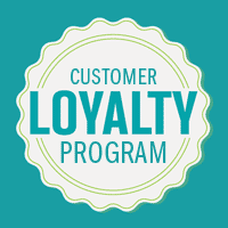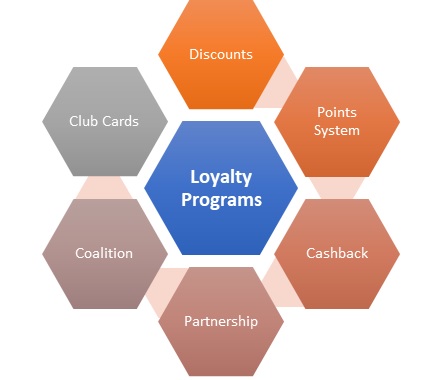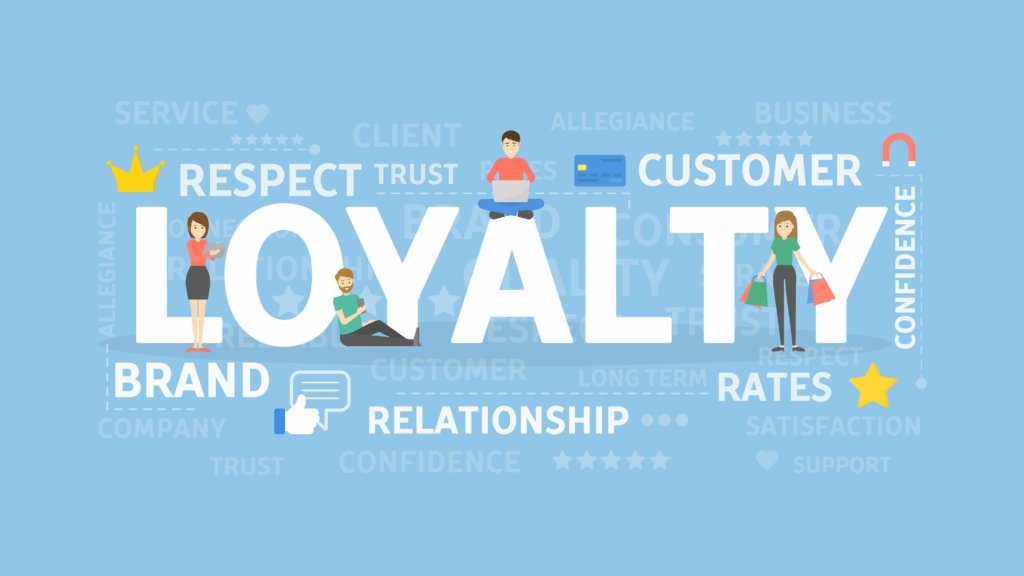All Categories
Featured
Table of Contents
In Reidsville, NC, Rose Cox and Luka Dodson Learned About Online Sales

What if you could grow your service without increasing your spending? In fact, what if you could actually minimize your spending but increase your sales, year after year? Would you do it? If you're a company owner, then you'll likely offer a resounding 'yes', a simple response to an even simpler concern.
A rewards program tracks and rewards specific spending habits by the consumer, supplying unique benefits to loyal customers who continue to shop with a certain brand name. The more that the client invests in the shop, the more benefits they get. Gradually, this incentive builds devoted clients out of an existing customer base.

Even if you already have a reward program in location, it's an excellent idea to dig in and completely understand what makes client loyalty programs work, along with how to carry out one that costs you little cash and time. Don't stress, I'll help you with that. I'll break down the primary advantages of a commitment program and the best methods to develop faithful customers.
Let's dig in. Customer commitment is when a consumer returns to work with your brand name over your rivals and is largely influenced by the positive experiences that the customer has with your brand name. The more favorable the experience, the more most likely they will return to shop with you. Customer loyalty is incredibly important to services because it will assist you grow your company and sales faster than a basic marketing plan that focuses on recruiting new consumers alone.
A few ways to measure client loyalty consist of:. NPS tools either send a brand name efficiency survey through email or ask clients for feedback while they are going to an organization's website. This details can then be utilized to better understand the possibility of client loyalty. A repurchase ratio determines the ratio of repeat buyers versus one-time purchasers.
Consumer commitment index (CLI). The CLI tracks customer commitment with time and resembles an NPS study. However, it considers a couple of additional aspects on top of NPS like upselling and buying. These metrics are then utilized to assess brand loyalty. A consumer commitment program is a marketing strategy that rewards customers who make purchases and engage with the brand on a continued basis.
Customer rewards programs are created to incentivize future purchases. This encourages them to continue doing service with your brand name. Consumer loyalty programs can be established in several methods. A popular client commitment program benefits clients through a points system, which can then be invested in future purchases. Another kind of customer commitment program may reward them with member-exclusive perks or complimentary presents, or it might even reward them by donating cash to a charity that you and your customers are mutually enthusiastic about.
In Delray Beach, FL, Louis Rios and Humberto Bentley Learned About Online Community
By offering rewards to your clients for being devoted and supportive, you'll develop a connection with them, deepening their relationship with your brand and ideally making it less likely for them to switch to a rival. You have actually likely seen customer loyalty programs in your own shopping experience, whether at your preferred coffee shops or your most frequented grocery stores.
However even if everybody is doing it does not suggest that's a sufficient factor for you to do it too. The better you comprehend the benefits of a customer rewards program, the more clarity you will have as you create one for your own store. You will not be sidetracked by interesting advantages and complicated commitment points systems.
Remember: work smarter, not harder. Consumer retention is the primary benefit of a benefits program that functions as a foundation to all of the other advantages. As you supply incentives for your existing customer base to continue to acquire from your store, you will supply your shop with a consistent flow of money month after month.
By growing your retention rate, you can stop spending as much time or money on increasing your general variety of consumers. Why is this essential? Loyal clients have a higher conversion rate than brand-new consumers, suggesting they are more most likely to make a transaction when they visit your store than a new customer.
By increasing your retention rate by only 5 percent, you can increase your revenues by 25 percent and as much as by 95 percent. Needless to say, your retention rate matters. Key Takeaway: If you want to substantially increase your revenues, supply incentives for your existing customers to continue to go shopping at your store.
And you won't have to invest money on marketing to get them there. Client acquisition (aka generating brand-new customers) takes a lot of effort and cash to convince complete strangers to trust your brand, come to your store, and attempt your items. In the end, any cash made by this new client is eclipsed by all of the money invested on getting them there.
Secret Takeaway: If you want to reduce costs, focus on customer retention instead of customer acquisition. When you focus on offering a favorable tailored experience for your existing consumers, they will naturally tell their family and friends about your brand. And with each subsequent deal, faithful consumers will inform a lot more individuals per deal.
In Williamsburg, VA, Marianna Andrews and Tucker Frye Learned About Type Of Content
The best part? Since these new consumers originated from trusted sources, they are most likely to develop into devoted customers themselves, investing more typically than brand-new customers generated by other marketing efforts. The Chase Ultimate Benefits program, for example, offers major perks for individuals who take a trip a lot.
The 'ultimate benefits' that Chase cardholders receive include 2x points per dollar invested on all travel purchases in addition to main rental cars and truck insurance coverage, no foreign deal costs, trip cancellation insurance, and purchase security. For individuals who take a trip a lotand have non reusable earnings to do sothere is a massive incentive to invest cash through the supreme rewards program.
This entire procedure makes redeeming benefits something worth boasting about, which is precisely what lots of cardholders wind up doing. And to assist them do it, Chase offers a bonus offer for that too. Key Takeaway: Make it simple for your clients to extol you and they will spread out the word about your purchase totally free.
As soon as you get the fundamentals down, then utilizing a commitment rewards app can help look after the technical details. Here are the actions to get started with developing your client commitment program. No client wants to buy items they do not want or need. The very same goes for your loyalty program.
And the only method to customize a tempting consumer loyalty program is by thoroughly knowing your consumer base. The best method to do this? By carrying out these strategies: Construct client contact info wherever possible. Guarantee your business is continuously constructing an in-depth contact list that allows you to gain access to existing clients as often and as easily as possible.

Track client behavior. Know what your consumers desire and when they desire it. In doing so, you can anticipate their wants and requires and supply them with a loyalty program that will please them. Classify customer individual traits and choices. Take a multi-faceted technique, do not limit your loyalty program to simply one avenue of success.
Motivate social media engagement. Frame methods to engage with your clients and target market on social networks. They will soon offer you with really informative feedback on your product or services, enabling you to much better comprehend what they anticipate from your brand. As soon as you have exercised who your consumers are and why they are working with your brand name, it's time to choose which kind of commitment rewards program will encourage them to stay faithful to you.
In 19701, Joshua Logan and Braylen Oneal Learned About Agile Workflows
However, the most common consumer loyalty programs centralize around these primary principles: The points program. This type of program concentrates on satisfying customers for each purchase they make with points in a point system. These points can then either be utilized on future purchases or put towards some form of reward.
The paid program. This type of program requires consumers to pay a one-time or yearly charge to join your VIP list. Loyalty members who come from this list have the ability to access distinct rewards or member-exclusive advantages. The charity program. This kind of program is a bit various than the others.
This is accomplished by encouraging them to do company with the brand name and, in return, their loyalty will be rewarded with a contribution to a charity. The tier program. This type of program focuses on increasing levels of brand name loyalty. The more devoted a customer is to a brand, the greater tier they will climb to and the better the benefits they will get.
This type of program is simply as it sounds, where one brand partners with another brand to provide their cumulative audiences with exclusive member discount rates or deals that they can redeem while doing organization with either brand. The community program. This kind of program incentivizes brand name loyalty by supplying its members with access to a like-minded neighborhood of individuals.
This kind of program is relatively similar to paid programs, however, the membership charge happens on a regular basis rather than a one-time payment. Next, pick which customer interactions you wish to reward. Base these rewards around which interactions benefit your organization the many. For instance, to help your business out, you can provide action-based rewards like these: Reward clients more when doing organization with your brand name during a slow duration of the year or on a notoriously slow day of organization.
Reward customers for engaging with your brand on social networks. Incentivize particular items you are attempting to move quickly. Incentivize purchases that are over a specific dollar amount. The concept is to make your client loyalty program as simple as possible for your consumers to use. If your customer commitment program isn't staff friendly, isn't easy to track, is too expensive to run, or isn't simple for your clients to utilize or understand, then staff and consumers alike most likely won't benefit from it.
To get rid of these barriers to entry, think about integrating a consumer loyalty software application that will help you keep on top of all of these elements of your program. Some quality client program software consist of:. CandyBar is a digital punch card program. It works by tracking your customer's purchases through an app on a computer system, phone, or tablet.
In New Milford, CT, Monica Bennett and Hamza Oconnor Learned About Gift Guides
Commitment members can then examine their rewards via text message and entrepreneur can utilize the program to call their clients. Yotpo. Yotpo is a cloud-based client loyalty platform exclusively for eCommerce companies. This software is particularly excellent at gathering every type of user-generated content, practical for customizing a much better consumer experience.
Loopy Commitment is a convenient customer loyalty software for services that mainly utilize Google Wallet or Apple Pay as their payment platforms. The software application creates a digital loyalty card that sends out push alerts to their customers' phones when they remain in close proximity to their physical shop. Once you've made the effort to choose which customer loyalty strategies you are going to implement, it's time to begin promoting and registering your first commitment members.
Usage in-store ads, incorporate call-to-actions on your site, send promos through email newsletters, or upload promotional posts on social networks to get your clients to join. It is necessary to understand the main benefits of a consumer rewards program so that you can produce a personalized experience for both you and your consumer.
Think of it. You know what kinds of items your clients like to buy but do you understand what brings them back, day after day, week after week? What makes them choose your shop over the shop across the street? What makes them your customer and not the customer of your biggest competitor? Remarkably, the answers to these questions don't come down to discount rate prices or quality items.
Latest Posts
Google Web Designer - Home Tips and Tricks:
The Leader In Website Design – Squarespace Tips and Tricks:
Modern Website Designs - Best Web Page Designers Tips and Tricks: